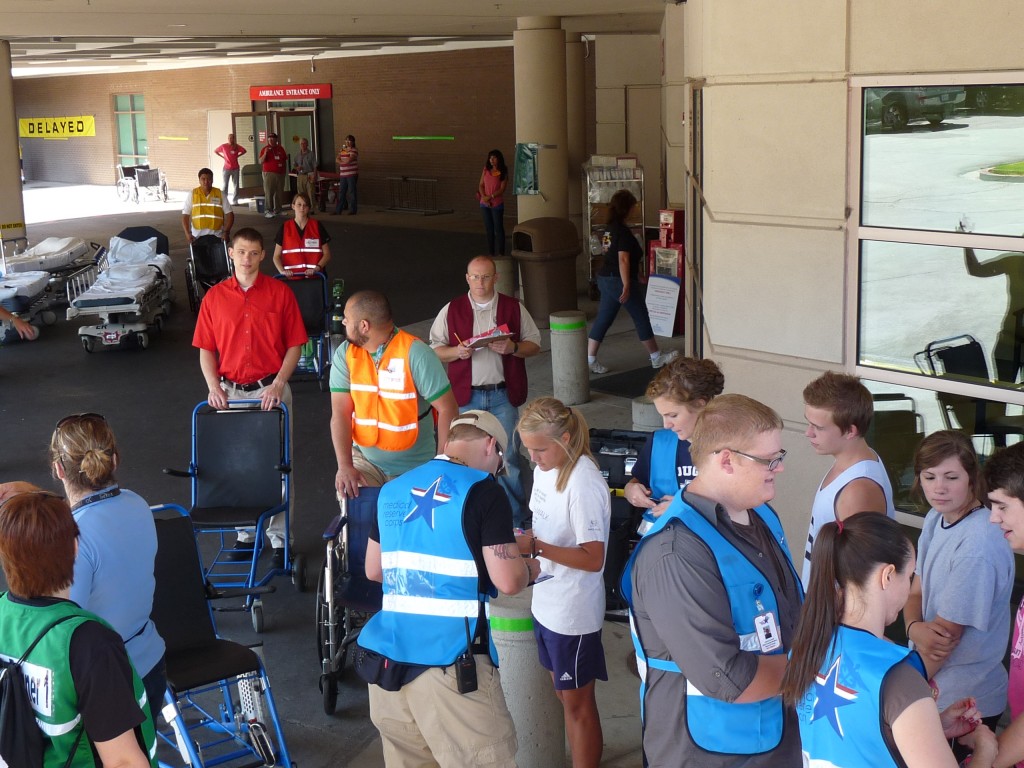By Scott Fisher, MPH, Senior Director, Public Health Preparedness, NACCHO, and Nicole Dunifon, MS, Program Analyst, Public Health Preparedness, NACCHO
On Jan. 17, President Obama signed into law a Federal spending bill that included a cut of over $100 million to the Health and Human Services’ Hospital Preparedness Program (HPP). That equals nearly a 30 percent reduction in a program specifically aimed at strengthening healthcare preparedness for public health emergencies. These cuts could have severe and dire consequences on the ability of communities to respond when disaster strikes.
Specifically, hospitals and other health care facilities and local health departments (LHDs), will have limited capacity to plan for and respond to public health emergencies such as Superstorm Sandy, which required the coordinated evacuation of a large number of patients, and the assistance of public health emergency response teams during and following the storm. While Sandy may have required the largest regionally-coordinated response, there is no shortage of other recent examples that should provide motivation for continued funding in support of HPP. For example, the mass shooting at the Century movie theater in Aurora, CO required seven hospitals to meet the surge of victims from the shooting, and the lauded quick triage of the injured following the Boston Marathon bombings was made possible because of the coordination of hospital response through training and planning supported through HPP.
Maintaining the capacity and capability to effectively evacuate patients, sustain operations during the midst of an emergency, meet the surge from increased volume of patients, and establish systems to reunite family following an emergency are all activities that have been supported by HPP grants. A decrease in funding means a loss in capacity to conduct these critical functions. A loss in funding also means a loss in capacity to exercise and test plans that address these and other functions, and coordinate these plans with other public health emergency response partners, such as LHDs and emergency management.
“Completion of the regional surge plan will be put on the back burner, as I will not have the personnel or capacity to work on it,” said Paulette Valentine, Emergency Preparedness Director for the Southwest Utah Public Health Department. She fears that with the loss in funding her team may not be able to complete, drill, and train on the current surge plans that are already in development. Paulette also believes her department may struggle to purchase regional assets to support medical surge. In the past, the Southwest Utah Public Health Department used HPP grant dollars to purchase a water filtration system, as well as cots and supplies for alternate care sites. Funding cuts are likely to eliminate these types of purchases moving forward. If LHDs no longer have HPP funds to support medical surge plans, LHDs will begin to see reductions in their capability and capacity to respond and protect their communities from the effects of emergencies and disasters, as has already happened in southwest Utah.
LHD officials are not only concerned about how these cuts will affect their community’s healthcare and medical surge planning, but are also considering the impacts to their staff. Many LHDs rely on their preparedness coordinators to organize and convene healthcare coalitions consisting of public health, hospitals, and other medical providers to plan and prepare for public health emergencies. Preparedness coordinator positions are often funded through the HPP grant and could be eliminated due to HPP cuts. With a reduction in staff, the collaboration and relationships built between these healthcare coalitions may be lost. With fewer personnel, “these cuts will make it very challenging for healthcare coalitions to expand and be maintained,” said Steve Alles, Public Health Preparedness Program Manager from the Philadelphia Department of Public Health. In his region, he would like to “integrate additional sectors, such as nephrology, to do better preparedness work,” but may not be able to because of the cuts.
Instead of looking at success stories like Boston as proof that hospital preparedness has been achieved, we should recognized that those success stories are the result of dedicated public health and health care responders with the resources and training they needed to save lives because of grant opportunities made possible through HPP. Without continued funding to provide training and resources, we cannot expect other communities to aspire toward these success stories as achievable examples. For LHDs, medical surge and public health preparedness staffing are just two areas that may be affected by budget cuts to HPP. How do you anticipate that HPP budget cuts of over $100 million will affect your LHD? Let us know in the comment box below.









